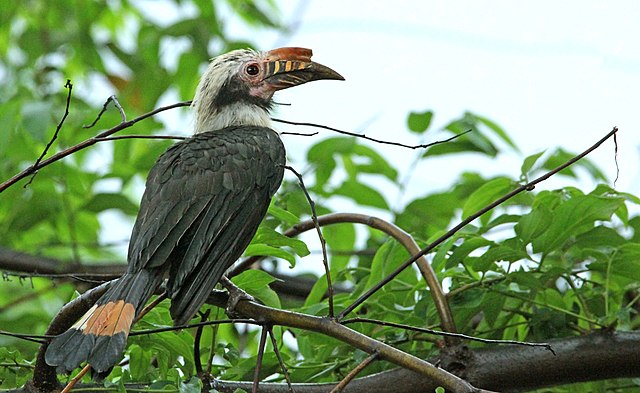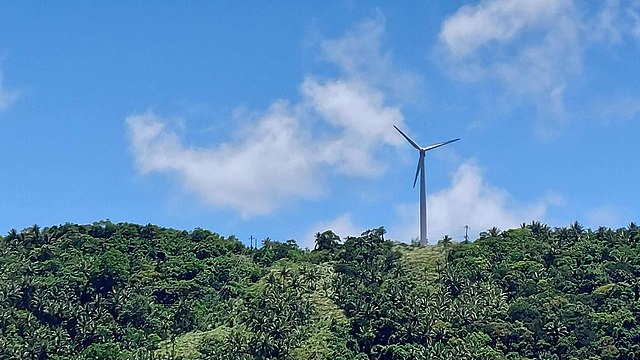Editor’s note: Wind farms are not a solution to ecological destruction, especially not when built in protected reserves. Singapore-based company Rizal Wind Energy Corp. (RWEC) is drilling illegally in wildlife sanctuary and ecotourism area Masungi Georeserve.
For this massive construction it is bulldozing forest to make roads. It needs diesel for the trucks and lube oil to run the wind turbines. Local environmentalists have protected the Masungi Georeserve over generations through educating local people and engaging in struggles against land grabbing.
This important work is dangerous: park rangers are shot, the army arrests workers and the government sends their agencies with legal threats.
Despite having considered giving up, conservationists won’t surrender: “If we abandon it, who will look after the wildlife?”
Everyone who is able to get active in these times of ecocide should ask themselves this same question.
Surprise Discovery of Wind Farm Project in Philippine Reserve Prompts Alarm
Drilling for windfarms without permission
Conservationists have expressed alarm over the surprise discovery that a Singapore-based company has started construction of a wind farm inside the Philippines’ Masungi Georeserve.
The Masungi Karst Conservation Area (MKCA), declared a strict nature reserve and wildlife sanctuary since 1993, is home to more than 400 wildlife species. The site is located in Rizal, a province about 60 kilometers (37 miles) south of the Philippine capital, Manila.
Drone images from late 2023 captured by the Masungi Georeserve Foundation, Inc. (MGFI), the nonprofit organization that manages the site, showed that Rizal Wind Energy Corp. (RWEC) was behind the construction, drilling to build 12 wind turbines as part of a renewable energy project. RWEC is owned by Singapore-based energy developer Vena Energy.
“This development entails widespread road construction and raises significant concerns for local wildlife, particularly threatening birds and bat populations,” the foundation said in a statement on Feb. 12. The group estimates that 500-1,000 hectares (about 1,200-2,500 acres) of the MKCA could be affected by the project, as it would require extensive road networks that may lead to forest clearing, vegetation damage, and visual disruption of the natural landscape.
The MKCA, previously commercially logged and barren, has been undergoing forest restoration since 1996 through a joint-venture agreement between the Department of Environment and Natural Resources (DENR) and Blue Star Construction and Development Corp., owned by the founder of Masungi Georeserve Foundation Inc. In 2016, when the foundation was formally established, Masungi also opened to the public as an ecotourism site, generating revenue to support ongoing restoration efforts in the area.
Green greed disturbs protected zone
Of the more than 400 flora and fauna species that call Masungi home, around 70 are endemic to the Philippines, including the Luzon tarictic hornbill (Penelopides manillae), which is nationally listed as vulnerable, and the Luzon mottle-winged flying fox (Desmalopex leucoptera), one of the world’s largest bats and internationally categorized as vulnerable.
In an online signature campaign against the construction of the wind farm, the group said this “misguided energy development” is the latest threat to Masungi, which already faces illegal logging, land grabbing, quarrying, and violence against its forest rangers. These challenges exist even though Masungi is part of the 26,000-hectare (64,500-acre) Upper Marikina River Basin that was declared a protected landscape in 2011.
The Masungi management said this venture “marked a disturbing violation” of a 1993 administrative order by the DENR prohibiting industrial or commercial uses of Masungi. The organization added that the wind farm project also shows a “blatant disregard” for the area’s designation as a strict protection zone in its own management plan.
As per the Philippine environmental impact statement system, projects that plan to operate in ecologically sensitive zones like Masungi need to obtain an environmental compliance certificate from the DENR prior to commencing activities.
Over four years of developing the Rizal wind farm, Vena Energy said that, “being mindful of its environmental impact,” it has secured various Philippine government permits, including an environmental compliance certificate, protected area management board clearances, and a certificate precondition, following an environmental impact assessment study and consultations with Indigenous peoples.
“Vena Energy assures the public that it continues to maintain open dialogue with stakeholders and is always willing to work with concerned parties to achieve the common good,” Angela Tan, the company’s corporate communications chief, told Mongabay in an emailed statement. The company has not responded to a request to verify its permits.
Coincidental discovery
MGFI says it was never formally informed of the project, which is reportedly nearing commercialization. Instead, georeserve staff discovered the project during routine monitoring of the site. MGFI advocacy officer Billie Dumaliang and her team periodically fly a drone over the reserve to monitor land changes, whether these are caused by fires, clearings, or new structures. In late 2023, they said, they were shocked to see four drilling rigs.
Zooming in on the photos, they discovered that RWEC was behind the drilling. “We immediately searched for their contact so that we can reach out to them and find out more about the project before reacting,” Dumaliang told Mongabay in an email on Feb. 21. “Nonetheless, we were surprised because as designated caretakers of the area, we were not informed of any wind development underway within the Masungi Karst Conservation Area.”
Hoping to persuade the company to relocate, MGFI did not publicize the issue until Feb. 12. This was after two meetings with company representatives where MGFI told them “they are on the wrong track.” According to MGFI, though, the company remains determined to build the wind farm inside Masungi, claiming it will undertake “‘mitigation measures.”
“However, mitigation is superficial if the site selection is wrong in the first place,” Dumaliang said, further expressing disappointment over what she describes as the company’s failure to adhere to emerging environmental, social and governance principles in the alternative energy industry.
“There are many other places to build colossal wind turbines — why do it inside a sensitive karst ecosystem and wildlife sanctuary which cannot be replaced?”
Touching interviews about the activists protecting Masungi Georeserve.
Wind power push
The Philippine government has promoted wind energy development to help meet its target of increasing the share of renewables in the country’s energy mix from 32.7% in 2022 to 50% by 2040. As of 2022, the country’s wind installed generating capacity stood at 427 megawatts, projected to rise to 442 MW by 2025. Since the enactment of a renewable energy law in 2008 up until November 2023, contracts have been awarded to 239 wind power projects. This includes RWEC’s 603 MW (potential capacity) project spanning Rizal and Quezon provinces, listed by the country’s energy department as in the predevelopment stage.
MGFI said wind energy development shouldn’t be pursued at the expense of the environment. “The transition to renewable energy and nature-based solutions such as reforestation and biodiversity conservation should go together. There should be no conflict between the two if the transition to renewable energy is done in a responsible manner,” Dumaliang said.
“If renewable energy development falls under the usual trappings of greed and capitalism, then we risk doing more damage than good.”
The group, along with 30 other civil society organizations, has demanded the revocation of RWEC and Vena Energy’s permits in the MKCA “on scientific grounds and the lack of public consultation.” It’s also seeking outright rejections for similar applications in this wildlife sanctuary, which is meant to be off-limits to industrial and commercial activities.


